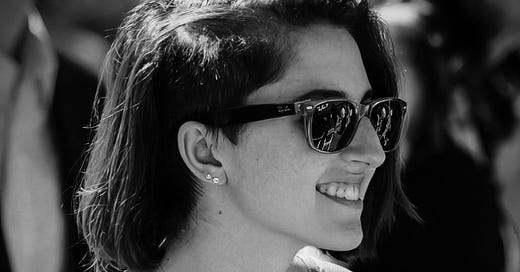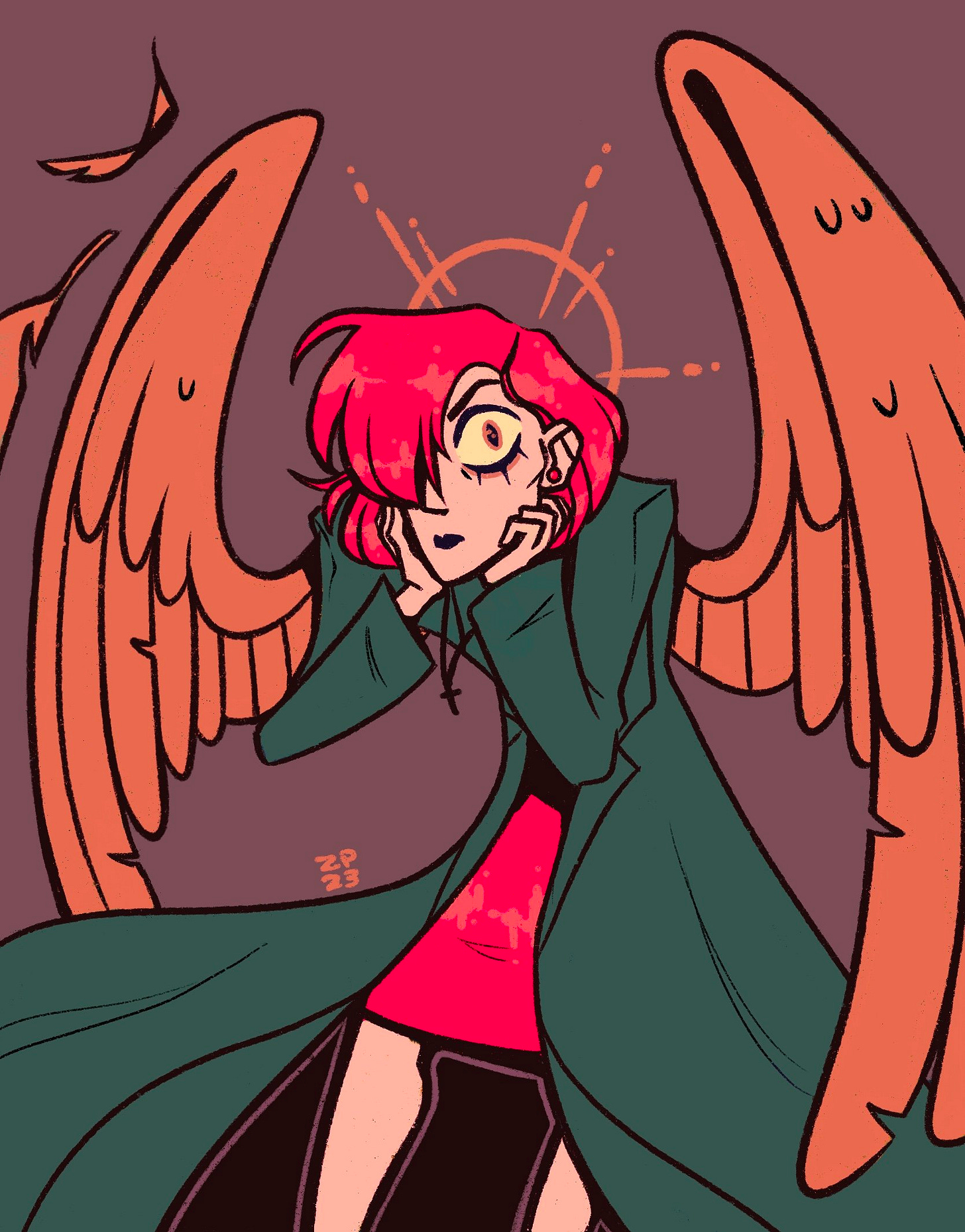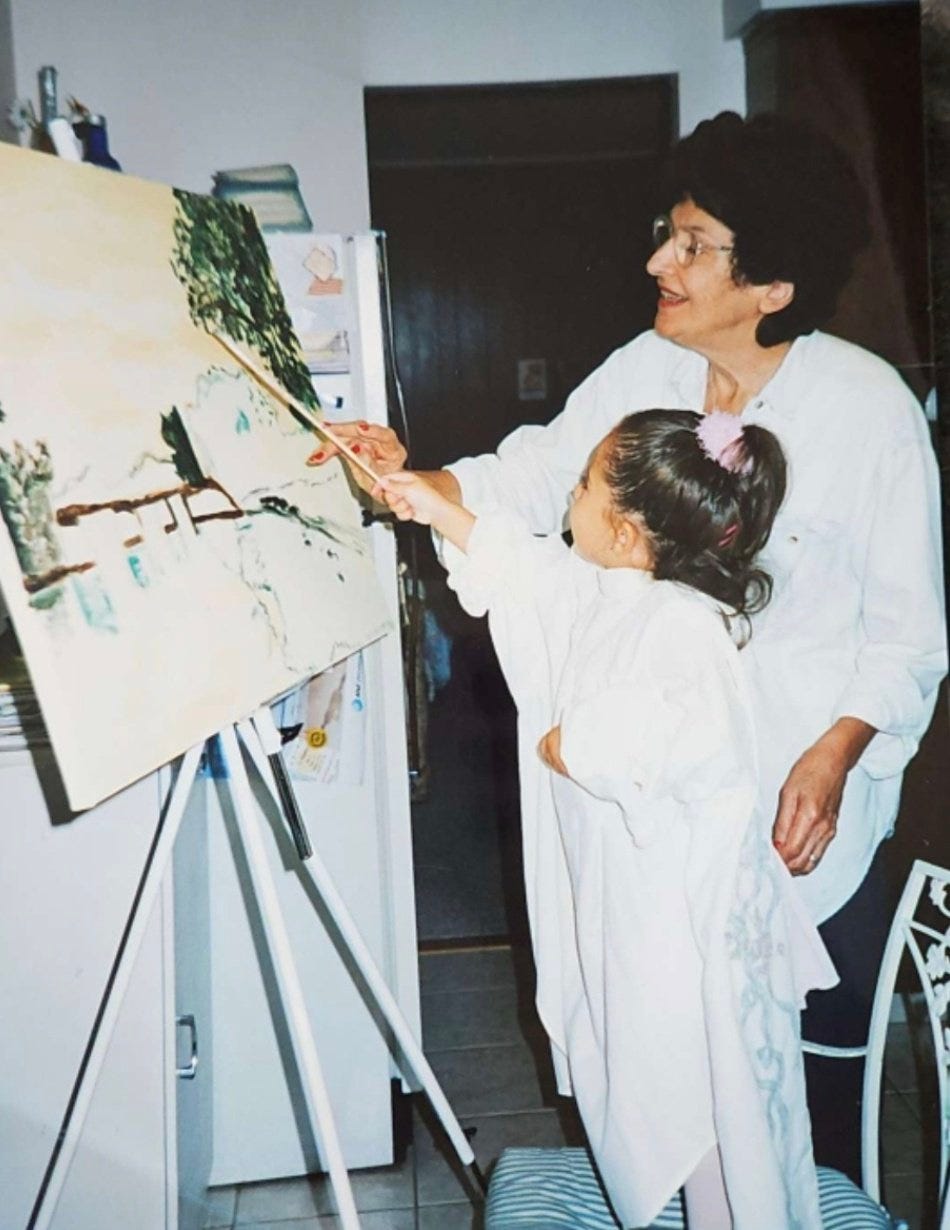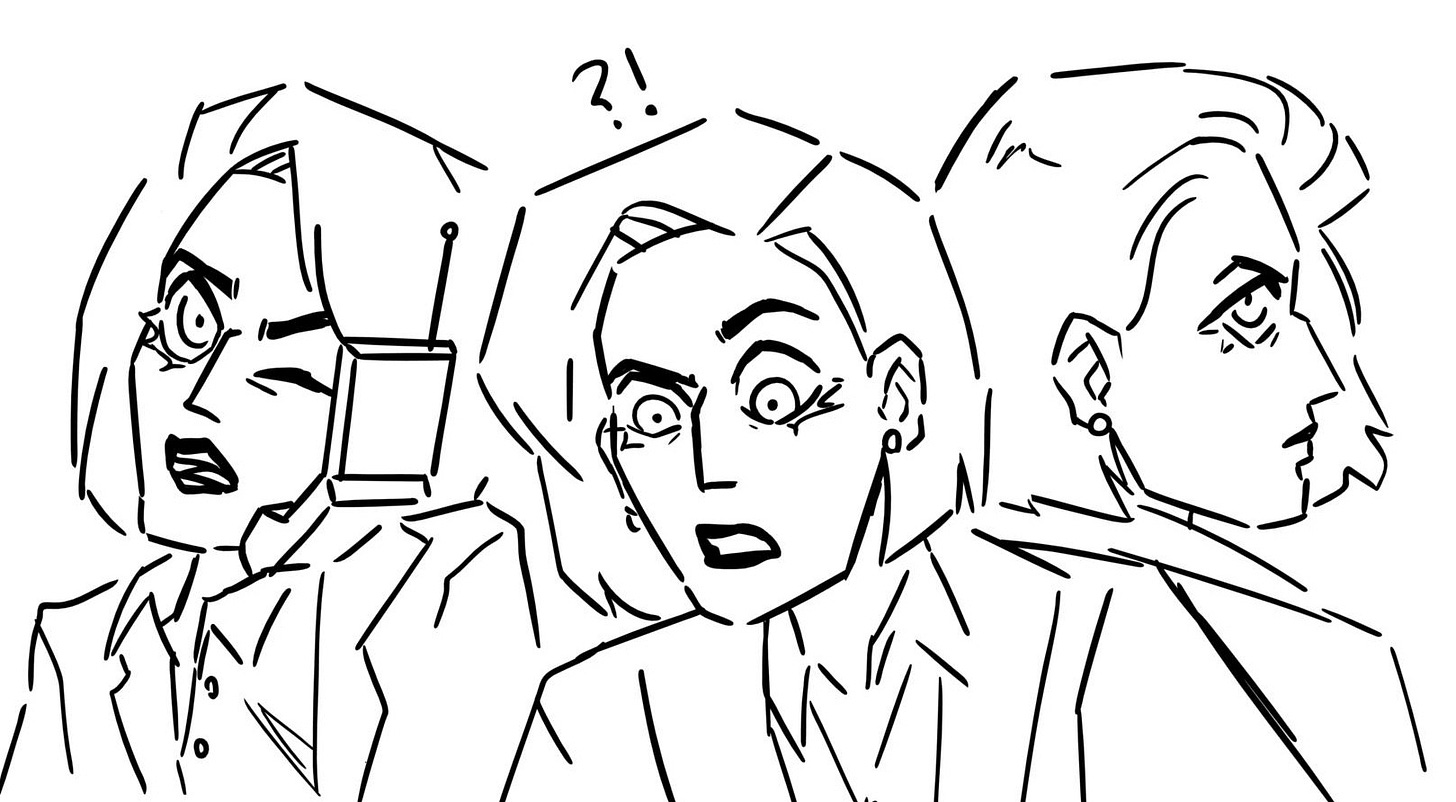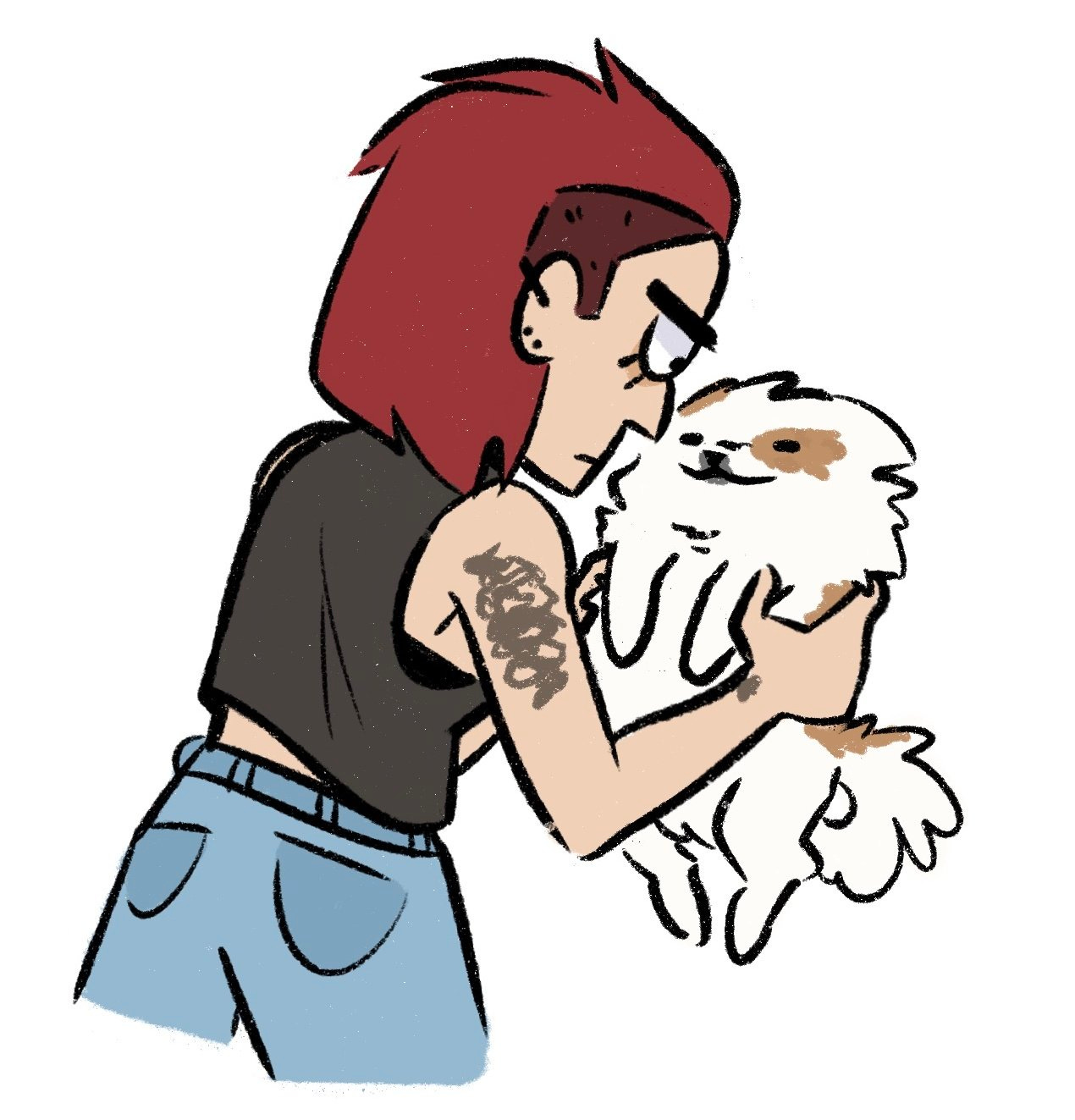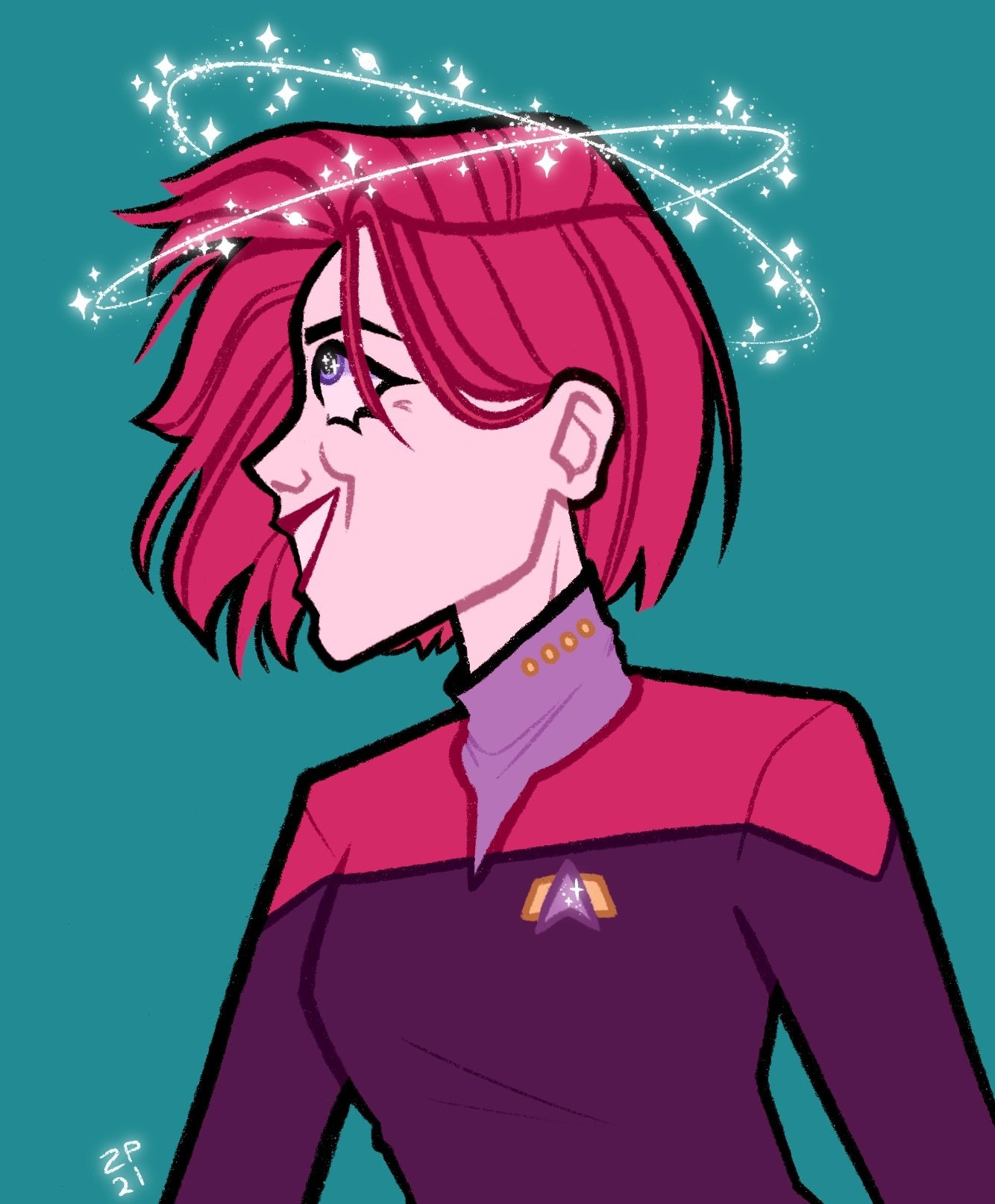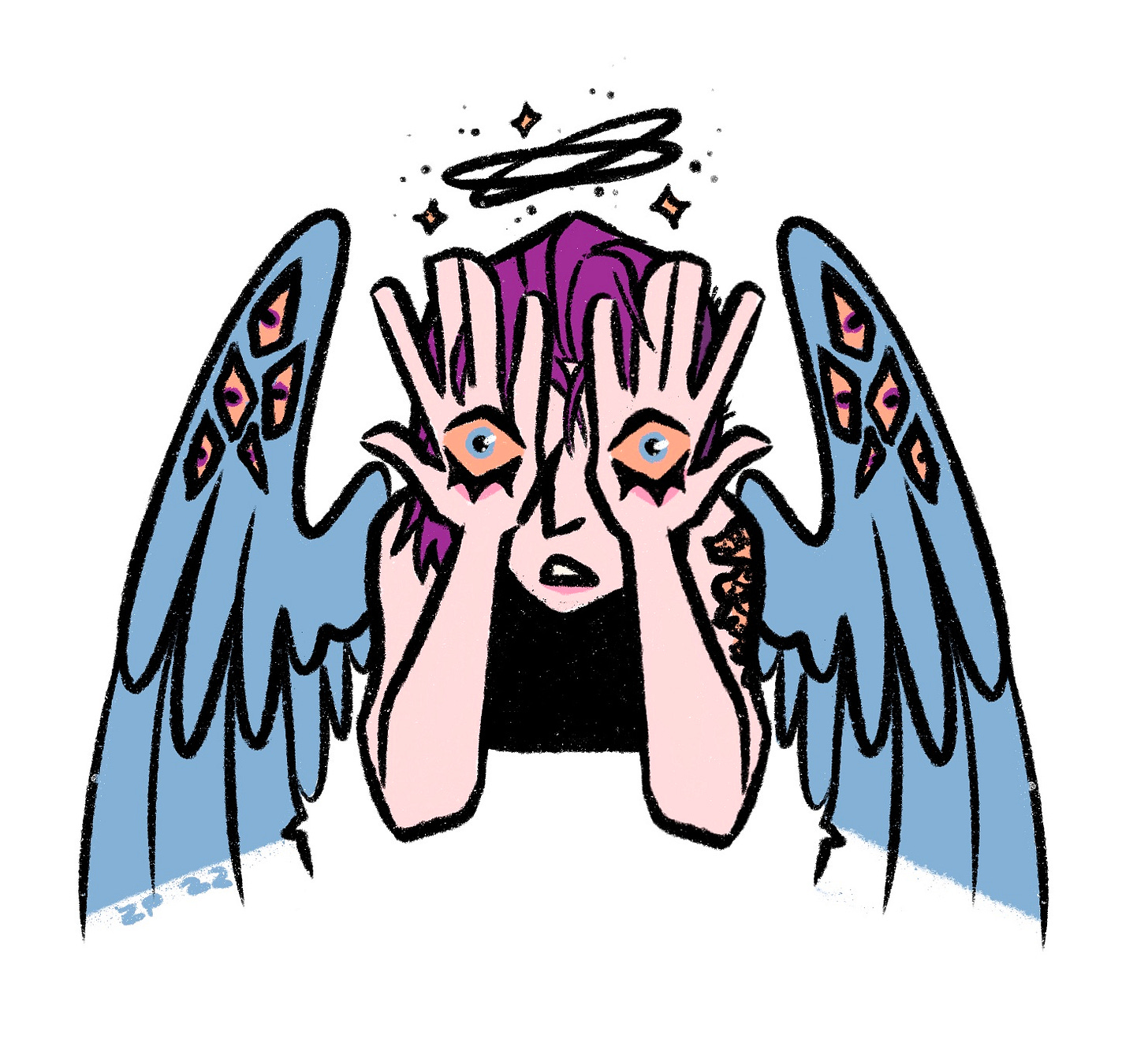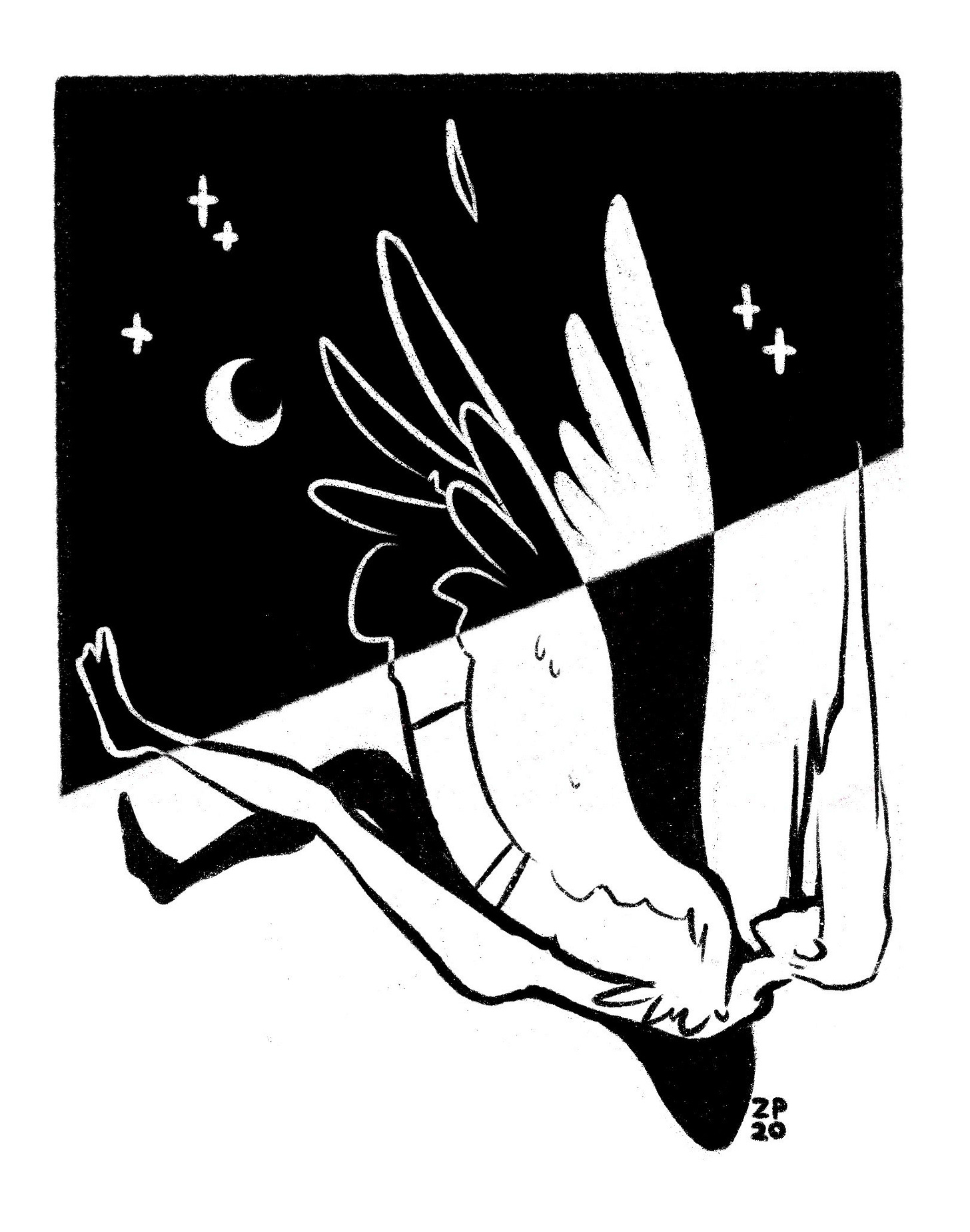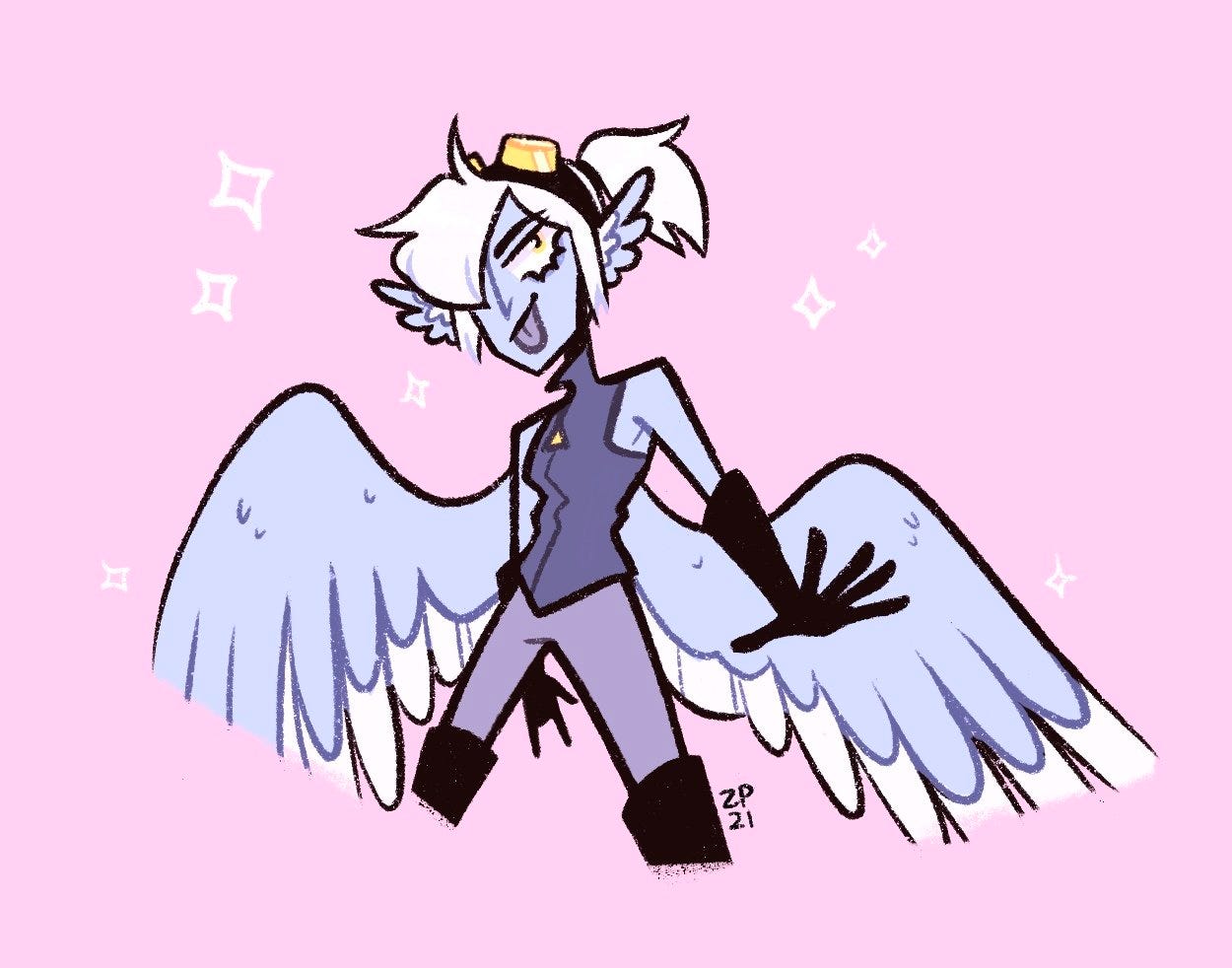Storyboard artist ZOË PANAGEAS hails out of Los Angeles where she’s been enjoying the kinship of collaboration with like-minded creatives in the animation industry. While it’s not an easy ride, she’s found her groove with a career path that promises an exciting future.
BTP: Tell us a little bit about yourself and why you decided to pursue your career as a creative storyteller.
PANAGEAS: My mom always says I haven’t stopped drawing since I was able to hold a pencil in my hand. And so, I grew up knowing I wanted to be an artist. Animation specifically came into the picture when I was messing around with a simple flipbook software on my DS and realized it perfectly combined my love for drawing and storytelling. I was around ten at that time, and there were certainly ups and downs between that light bulb moment and actually being able to pursue 2D animation as a career, but I always knew that was where I was meant to be.
BTP: That’s interesting. I always wondered how artists discover animation specifically because it’s a very specialized set of skills. I remember drawing flipbooks in the corners of school textbooks that would end up getting shared with lower classmen as we progressed. But I never considered that as a gateway to animation. Were there styles of animation or cartoons that really resonated with you and what were some of your favorites?
PANAGEAS: I loved making flipbooks too! I’ve heard that from a lot of people in animation actually which is very interesting.
I was always into your classic Disney stuff of course, Treasure Planet persisting as my favorite from childhood to now. I also loved Toy Story, I was actually Buzz Lightyear for Halloween from ages 3 to 6 to my mother’s dismay (but of course she’d never stop me). And as a teen Steven Universe helped me really understand storyboarding for television and what that’d look like as a career, likely directly leading to me pursuing it! I have a soft spot for sci-fi if you can’t tell.
BTP: Who was your first advocate or earliest mentor that helped in your pursuits?
PANAGEAS: Oh, one thousand percent my grandma. When I was born, she was finally going to art school in her 60s, and for the first two years of my life while my parents worked, she took care of me, and I took those classes alongside her to an extent. There are countless pictures of me as an infant surrounded by her art textbooks, listening with her to her tape recordings of her classes, and as my life progressed even more of me drawing, painting, sculpting, everything with her. She’d throw out the crayons and coloring books my mom bought me telling her, “she doesn’t need to color in the lines, she needs to draw.” We were kindred spirits as I come from a family of engineers, art wasn’t something you legitimately pursued. Graduating from an art school with my own BFA and then working full time as an artist I like to think I am living her dream, and I will always be incredibly proud of that.
BTP: Both Lance and I had mothers who were artists. They introduced us to the craft and like you we took to it like a duck to water. But that’s really cool, sharing so much of that with your grandmother! What a treat. Did she continue in art past the point of school? How did her support of your studies help you in your career?
PANAGEAS: It’s always so nice to hear from other artists who had family members supporting and guiding their passion! It’s really a gift.
After she graduated my grandma continued her art in countless ways. She was a member of the local art association where her art (paintings, photographs, sculptures, you name it) was always being shown in art shows at the library where she won many awards. I fondly remember her always including her grandchildren’s artwork in the shows too, having proudly featured mine and my cousins’ silly doodles alongside her masterful pieces. She also taught art classes for children and always went out of her way to support local artists.
Her support of my studies is the one and only reason why my career exists today. Besides her and my mom, to say the rest of my family weren’t thrilled with my career choice would be an understatement. But she always had my back. When I was eight, she took me to The Met. For my tenth birthday she signed us both up for classes at The Kubert School. She cheered the loudest for me at my high school and college graduations. She was my number one fan, and I could do anything with her in my corner. Now her paintings line the walls of my home in LA, and when I look up at them as I work, I know she always will be.
BTP: When compared to your early work experience do you feel like you were well-educated to step into a role or was there a larger divide between school and actual pipeline production?
PANAGEAS: I always like to say art school taught me the ideas and principles of animating, but not the actual job of doing it. You can be the top artist in your class and draw circles around everyone else but none of that matters if you don’t have the people skills to go along with it. Entertainment and animation specifically are such collaborative industries and I don’t think you really experience that until you work “in the field”. I love that part of my job so I wouldn’t want it any other way but it does take a bit of getting used to and for me it was a lot of trial by fire. I went from intern to assistant animator to lead animator over the course of months and really just had to be game for anything. Thankfully I also worked and continue to work with incredible people who are always more than happy to answer questions, help out or show you the simple solution to something you’ve been fighting with for hours on end. Again, at the end of the day this is a collaborative industry, we all want to see each other succeed.
BTP: This is such a great point! People skills are unique when everyone is on the same project in the trenches. That’s where bonds are made, and the real work begins. In your career path what projects have been the most difficult and why? And vice versa, which ones have been the best, and why?
PANAGEAS: Great question! The couple of collaborative projects I got to do in college were always rough, but we were all young and inexperienced and again, trial by fire is the best way to learn. Outside of that some of the first projects I worked on right out of school were the most challenging. Being very green myself and only working remotely due to COVID made it much harder to form those bonds and collaborate in the ways I previously mentioned. However, when asked for the best, I always have to point to my time on Royal Crackers. I joined the team pretty early on in production and doing both retake animation and storyboard revisions meant I got to spend a lot of time with the show and the team behind it. I think I spent around two years on the show which is huge nowadays. And of course, the crew being top notch was all the more of a bonus. Having incredible directors who trusted me and taught me incredible stuff that I’ll keep with me for the rest of my career, along with countless days spent laughing, was such a treat.
BTP: As creatives we tend to have personal goals or aspirations for ourselves. What are yours and what does achieving them look like in the next 5 to 10 years?
PANAGEAS: I’d like to continue my work in storyboards and retakes, but I’d also really love to supervise/direct sometime down the road. And further down the line even show run if I have the opportunity. I love the path my career has taken and don't ever want to get off the ride.
BTP: I worked with an animator years ago who worked at Filmation and on a few films. He said back in the 80s animation was so tough because you had to bounce around from project to project and studio to studio, always hustling and competing with everyone. He said it was exhausting. Can you describe the landscape of animation today, how people get on projects, or work with studios, and if there’s any real stability?
PANAGEAS: Ah I can absolutely relate as I’m sure most people in the modern animation industry can. I wouldn’t trade what I do for the world but being in a constant cycle of job hunting no matter your resume is absolutely exhausting. I’ve been very lucky to have consistent work, but I owe that to making finding my next gig my second job. And of course that means stability isn’t easy to come by. But I do think in recent years with the job situation becoming more dire more of us have learned to look out for each other. As much competition as there is in this industry, I like to think there is just as much collaboration. Everyone I’ve worked with has wanted me to succeed just as much as they want to and vice versa, which is something really unique and special.
BTP: What advice would you give to your younger self regarding your life’s path thus far?
PANAGEAS: You know what you want to do so do it. It won’t be easy, it won’t be a straight line, but it will be so worth it. Draw, study, and enjoy your life because you’re going to be just fine.
BTP: As young people we just don’t have that foresight and life experience to know that things do work out because of the choices and people we meet. I think today’s youth struggle with that a little bit, feeling frozen that they have to make the right choice. If you weren’t working in animation or art what career path could you see yourself doing instead and why?
PANAGEAS: Decision making is paralyzing and I’m no exception to the rule. Putting my foot down and declaring art as a career path was not a simple choice in any way. For a long time, I went back and forth between it and the much safer option of following my family’s footsteps and becoming an engineer. And it was my reality for a while in high school when I didn’t think the rest of my family would support me pursuing art. I was a year ahead in math and lined up to take calculus senior year and finish the IB program, all of which I hated. But something in me snapped. I didn’t want the rest of my life to be filled with that hate for what I do. And, to my guidance counselor’s dismay, I changed my schedule to build an art portfolio instead of my ACT score, signed up for figure drawing classes 45 minutes outside of town, and the rest is history.
BTP: What is the most difficult thing you’ve had to do in your career and how did you make it through?
PANAGEAS: I think learning when to say no has been incredibly difficult. When you love what you do you just want to take every chance, you’re offered to do it but that’s just not feasible. It’s really important to me to give my absolute best to any project I’m on, but in order to dedicate the amount of time and energy necessary to do so means there’s only so many you can work on at a given time. Kind of a “jack of all trades master of none” situation? And you need to be valued too, it goes both ways. Some of the best advice I received when I started my career was that you want to work with people who value you and your time because those are the kind of people they’ll recommend you to. And if you work with people who don’t value that, those are the kind of people you’ll always work with.
BTP: Great answer. I remember friends of mine who did so well that the studio would just pile more work on them until they burned out. NO is such a powerful word and one we struggle with whether being a freelancer or working in a studio. What do you think makes a great ANIMATION DIRECTOR or SHOW RUNNER and have you worked with anyone that has those qualities?
PANAGEAS: Burnout is the enemy of all artists and should be avoided at all costs. I’m lucky enough to have only worked with (or maybe not luck but because of the previous advice), the most incredible directors and showrunners who also know this. And I think that’s what makes them so good at what they do. Knowing and trusting the people you were tasked to lead is so much more important and effective than cracking a whip, giving indirect notes, and running your production into the ground. Again, this goes back to wanting your peers to succeed, and every great director I’ve worked with has made it known that that is what they’re here for. Because at the end of the day we’re all working towards the same goal and we need each other to get there, whether we like it or not, so why not make it a little easier for everyone along the way.
BTP: Thanks for joining us Zoe, we really appreciate you sharing your story. Where can people find out more about your and your work? (Please send links that you'd like people to have)
Thank you for having me! It's been my pleasure. The best places to find me and my work are the following:
Portfolio: https://zoepanageas.myportfolio.com
Instagram: https://www.instagram.com/zonchzone/
Twitter: https://x.com/zonchzone


